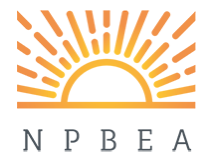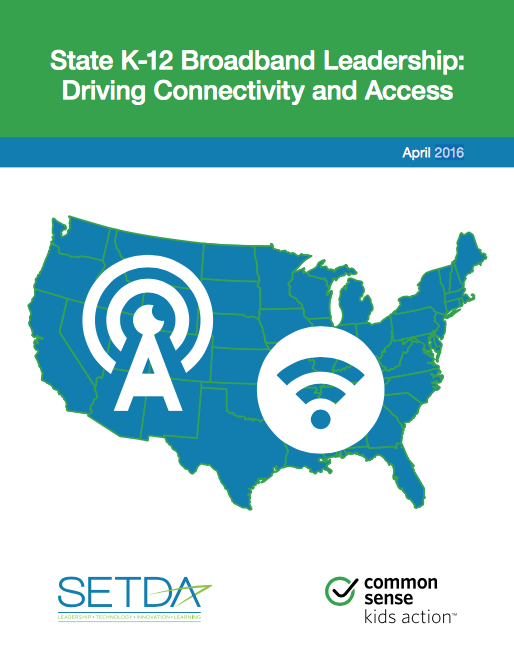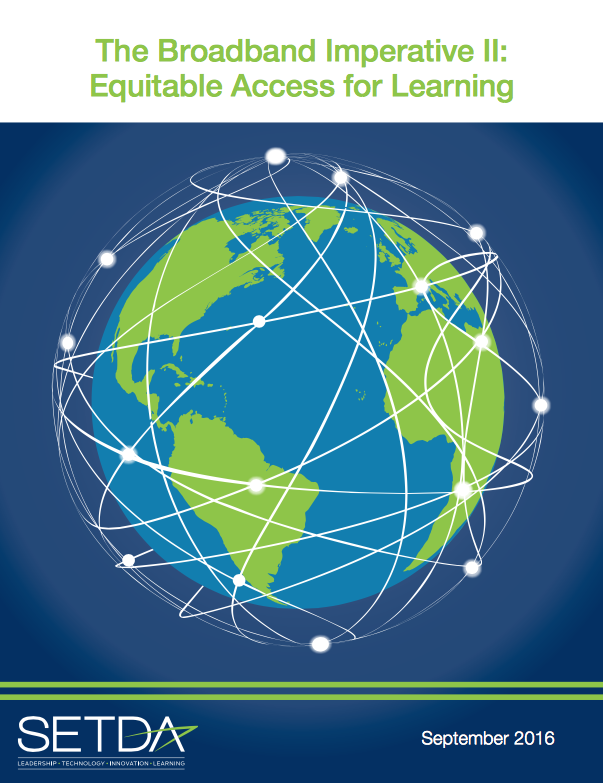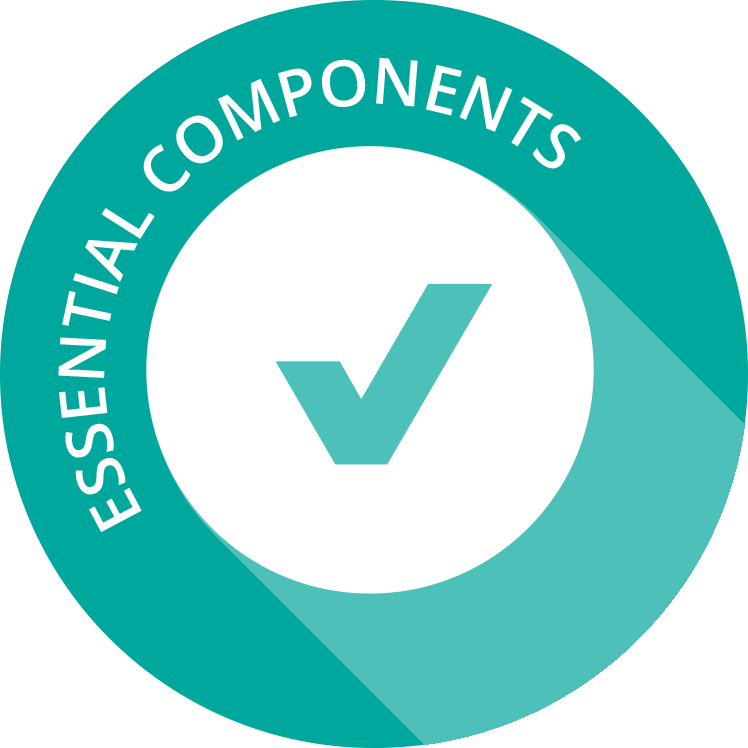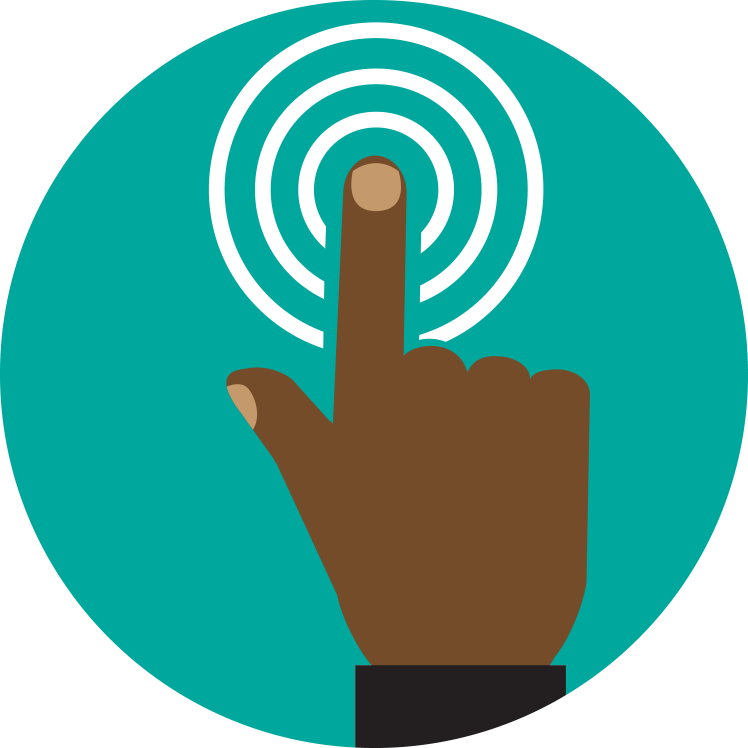Resources
Use the filter box on the right to locate the resources meeting your criteria.
-

Open Educational Resources Policy and State Perkins Career and Technical Education Plans
This paper recommends actions and ideas that leaders should consider for making OER policy a more meaningful part of their Career and Technical Education plans and implementation activities for 2020 and beyond.
-

Transformative Digital Learning: A Guide to Implementation
About this Project In collaboration with multiple education organizations and with state leaders, SETDA developed professional learning resources for states to build state-level capacity as they transition to digital learning. The project includes a set of professional learning resources, known as facilitator guides, for states and districts to use to host statewide and/or regional convenings […]
-

ISTE Standards: Preparing Students for the Digital Age
This video provides an overview of how and why to implement ISTE Standards to support digital learning.
-

Reimagining Classrooms: Teachers as Learners and Students as Leaders
Kayla Delzer speaks about her mission to revitalize learning and the classroom environment. Kayla explains how to release the power in the classroom by giving students ownership of their learning and making it relevant to them,
-
BATC STEM Academy
This short video discusses the creation of the STEM Academy in Utah.
-

Student Surveys: Using Student Voice to Improve Teaching and Learning
When teachers survey their classes at Trinidad Garza Early College High School, students see how their opinions matter and have a direct impact on instruction.
-
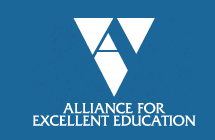
Personalized Learning in Henry County, Georgia
Efforts to personalize instruction for all students in Henry County, GA are well underway thanks to strong district leadership and effective technology planning to achieve higher standards for learning.
-
The White House Student Film Festival: Technology in Classrooms
Segments of unscripted interviews of K-12 students answering questions about technology in the classrooms of today and tomorrow. Produced and edited by Liam Trumble: liamtrumble.com
-

Digital Learning Day Video Project 2013
Students in Black Hawk elementary school in South Dakota shows Transforming Digital Learning.
-

School Board Members Support College and Career-Ready Standards
This video shows students using digital tools and applications to prepare for college and a career. School board members discuss the positive impacts of adopting college and career ready standards to better prepare students for the future.
-

College and Career-Ready Standards at William Penn High School, DE
In this short video, William Penn High School, Delaware prepares students for the workplace by implementing college and career ready standards. Students collaborate and use digital tools and applications to enhance their learning experiences.
-
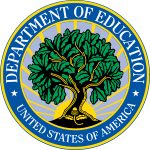
Bringing Learning and Standards Together (BLAST)
This short video describes Clark County School District’s Bringing Learning and Standards Together (BLAST) professional development initiative.
-
Impact of the Principal on School Culture and Climate
This video presents interviews of teachers from Caldwell Early College High School about the impact of the principal on the climate and culture of a school.
-

Richland District Two, South Carolina
INTERNET ACCESS HELPS SPANISH-SPEAKING FAMILIES PROSPER IN RICHLAND SCHOOL DISTRICT TWO
-

What is Student Data?
In this short video, learn more about how student data can empower parents, students, educators and policymakers. There are many types of data that support student learning. The video shows the types of data that can come together—under requirements like privacy and security—to form a full picture of student learning.
-

Good Digital Parenting
Good Digital Parenting video where teens help parents to understand and use online privacy settings.
-

Changing the Conversation About Librarians
Mark Ray is changing the conversation from “shh…” to “How can I help your with technology?” Mark has helped to overhaul libraries in Vancouver Public Schools in Washington state.
-

What Do You Predict for the Future of School Libraries?
In this video, librarian Sereena Hamm of Washington Latin Public Charter School discusses what she predicts for libraries in the future.
-

Teachers Create what they Experience
Create a shared vision of teaching and learning. Using learning as a process and not an event. Allow authentic learning through practice, trail, and authentic activities.
-

Digital Equity and Teacher Preparation: Improving the K–12 Teaching Pipeline
This video, by Alliance for Excellent Education, focuses on the role of partnerships between K-12 schools and institutions of higher education (IHE’s) in training new teachers to use technology effectively.
-

Reimagining Higher Education Convening
Paul Freedman, founder and CEO of Entangled Ventures, discusses their work with higher education institutions to develop new models.
-

Attaining Broadband District-Wide
Howard-Winneshiek Community Schools, Cresco, IA Howard Winneshiek Community Superintendent John Carver discusses how to bring a rural district to a place of connectivity district-wide.
-

Digital Learning Day 2015 – Vista USD
Vista Unified, California: Strategic Partnerships and a Model of Innovation Vista’s superintendent and principals share how digital learning has impacted learning opportunities for their students.
-
Learning in One-to-One Laptop Environments
A new report by Dr. Binbin Zheng at Michigan State University reviews 65 journal articles and 31 doctoral dissertations published from January 2001 to May 2015 to examine the effect of one-to-one laptop programs on teaching and learning in K–12 schools. A meta-analysis of 10 studies examines the impact of laptop programs on students’ academic achievement, finding significantly positive […]
-

Future Ready Schools: Interactive Planning Dashboard
A free interactive planning tool that provides ongoing support to district and leadership teams who take the Future Ready Schools Pledge.
-
CoSN’s 3rd Annual Infrastructure Report
CoSN’s 3rd annual Infrastructure Survey (conducted in partnership with AASA and MDR) asked K-12 school leaders and technology directors from around America about the state of connectivity in their districts and the impact they’ve felt from last year’s changes to the E-rate program. For the third straight year, leaders identified affordability as the primary obstacle […]
-

Lesson-Sharing Sites Raise Issues of Ownership, Use
This article discusses lesson-sharing sites, key sources for common-core related PD, and the issues with ownership. “Say you’re a teacher and you’ve created a bang-up lesson on how to teach fractions on the number line. Everyone in the faculty room loves it. Fellow teachers are begging for copies. Your principal suggests you post it online […]
-
Open Educational Resources (OER) Stories, Policies, and Resources
The Council of Chief State School Officers (CCSSO) presents the second phase of a 2014 initiative designed to explore the state of development and dissemination of OER. In 2015, CCSSO released an update to last year’s OER report, expanding the research to include districts and educators working closely with OER.
-
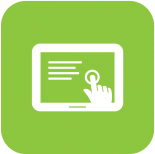
It’s Not the Device; It’s What the Device Can Do
Devices for eduction have become symbolic of the efforts to transform education through blended and personalized learning. Desktops, laptops and tablets are quickly becoming ubiquitous in education. They are tangible examples of change and, with the exception of few dazzling products, nearly indistinguishable
-
E-rate Modernization Resources
SETDA and Common Sense Kids Action developed several resources to support state and local policymakers and digital leaders as they navigate the modernized E-rate program. The goal is to help state and local leaders achieve high-speed connectivity in their jurisdictions and to support the national goal of connecting every classroom and library in America to […]
-
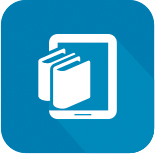
EdTech Update
SETDA and Aggregage have partnered to publish the EdTech Update. This site and newsletter brings together in one place content from the widest set of industry thought leaders. EdTech Update is responsive and customizable, using what the audience does with the content, both collectively and individually, to deliver the most interesting and relevant content to […]
-
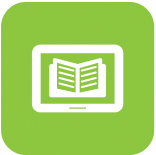
Ensuring the Quality of Digital Content for Learning
This paper, published with Foresight Law and Policy, complements SETDA’s prior digital transition policy briefs by examining strategies for ensuring digital content quality, including exploration of the specific quality-control challenges and opportunities associated with OER.
-
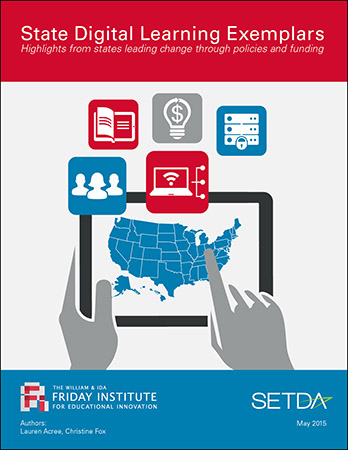
State Digital Learning Exemplars
SETDA and the Friday Institute for Educational Innovation at NC State University, College of Education co-released this national report. States are striving to support the expansion of technology tools and resources in K-12 education through state policies, programs and funding in order to provide digital learning opportunities for all students.
-

Digital Instructional Materials Acquisition Policies for States (DMAPS)
The DMAPS website is an online database providing state and territory policies and practices related to the acquisition of digital instructional materials in K-12 education. This unique tool offers the opportunity to view details regarding individual states and national trends via an interactive map.
-

Navigating the Digital Shift
This report provides details to help educate school and district administrators, policy makers and the private sector on the flexibility of state policies related to the procurement of digital instructional materials.
-

OER in Action: Implementation Case Studies
SETDA’s online OER case studies demonstrate how the policies and practices at the state level have provided the avenue for the implementation of OER materials in New York, Utah, and Washington.
-

The Guide to Implementing Digital Learning – Overview (printable document)
The Guide to Implementing Digital Learning (GIDL) is a free web-based resource to support school and district leaders as they work to ensure that investments in digital learning spark positive results. GIDL includes six topic areas: planning, professional learning, content and software, broadband, devices and tech support. Each topic’s section includes background information, key considerations […]
-

Curriculum Associates’ The Science Behind i-Ready’s Adaptive Diagnostic
This resource provides an overview of adaptive assessments and the Curriculum Associates’ i-Ready adaptive assessment tool.
-

Curriculum Associates’ Guide to Purchasing EdTech the Right Way
This resource provides guidance to simplify the process of implementing digital learning initiatives and to help leaders avoid many of the pitfalls based on the experiences of other schools and districts. The guide includes 14 steps to ensuring quality digital learning implementation including guidance on taking inventory, determining educational priorities, budget considerations and the need […]
-

P21’s Exemplar Case Studies
This Partnership for 21st Century Skills resource highlights best practices in schools and districts across the country that are preparing students for college, career and citizenship by embedding critical 21st century competencies into the learning environment.
-
NASBE’s Report: Born in Another Time
This report addresses how our digital age has affected the learning needs of today’s students, and how state boards of education and policymakers can ensure that their schools are fully prepared to address the impact of rapid technological change on the fundamental processes of teaching and learning.
-
Knowledge Works: Innovating Toward a Vibrant Learning Ecosystem
The innovation pathways framework is designed to help education stakeholders — including those who are stewarding the current education system and those who are working in other kinds of learning environments or innovating on the fringes of the current learning landscape — become active agents of change in creating the future. –
-

ED’s Funding Digital Learning
This resource provides some guidance for states and districts regarding updating technology resources. Before major technology purchases, leaders will want to consider an approach and define a goal that makes sense for the particular region.
-
New Media Consortium Horizon Report: 2014 K-12 Edition
The NMC Horizon Report: 2014 K-12 Edition examines emerging technologies for their potential impact on and use in teaching, learning, and creative inquiry in schools
-

Project Tomorrow’s Digital Content Infographic
This infographic provides statistics from Speak Up 2013 related to student and teacher use of digital instructional materials.
-

Project Tomorrow’s New Digital Learning Playbook
This is the first in a two part series to document the key national findings from Speak Up 2013. The report focuses on establishing a more comprehensive understanding of the myriad of different ways that students are currently personalizing learning using technology.
-

CoSN Empowered Superintendent Toolkit
Version 3.0 of the Empowered Superintendent Toolkit guides leaders through ed tech’s challenges. This is a CoSN initiative dedicated to helping superintendents, aspiring superintendents and district leadership teams build their knowledge, skills and confidence as technology leaders.
-
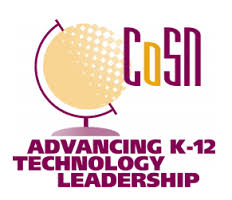
Rethinking State and School District Policies Concerning Mobile Technologies and Social Media
This document was developed to help inform policymakers and educators as they develop or reconsider policies addressing new digital media in the context of improved learning.
-

Oregon CIPA and eRate Compliance Resource Guide
This document was develop as a collaborative effort by Oregon’s school districts to provide a comprehensive overview of CIPA and E-rate compliance requirements.
-

Kentucky Digital Learning Guidelines
The Kentucky Department of Education Digital Learning Team designed the Kentucky Digital Learning Guidelines as guidance for schools, districts, and digital providers when selecting or creating developmentally appropriate digital learning resources for instruction, as well as online and blended learning courses in Kentucky schools.
-

ISTE Essential Conditions
The International Society for Technology in Education provides 14 Essential Elements for implementing digital learning.
-
Building Technology Infrastructure for Learning Guide
This guide provides information intended to help district leaders (superintendents, principals, and teacher leaders) navigate the many decisions required to deliver cutting-edge connectivity to students.
-

Empowering Educators through Professional Learning Toolkit
This toolkit provides leaders with a multi-step decision-making process, practical tools, and numerous examples for setting a trajectory of positive change, moving assertively toward achievement of student learning and improvement goals.
-

Improving Ed-Tech Purchasing
This study focuses on software that teachers and students use for instruction rather than hardware or professional development services.
-
What is a badge?
This video explains how digital badges are used to recognize the learning that happens anywhere and share it in the places that matter.
-

CoSN’s Second Annual E-rate and Infrastructure Survey
This report provides the results from CoSN’s 2nd Annual E-rate and Infrastructure Survey (conducted in partnership with AASA and MDR). The data includes gaps in US school districts’ broadband and technology infrastructure and identifies affordability and adequate funding as the most significant barriers to Internet connectivity.
-

E-rate Maps of Fiber Connectivity to Schools and Libraries
Two maps providing a visualization of current fiber availability for schools and libraries across the country.
-

Summary of the E-rate Modernization Order
This summary of the E-rate modernization order describes the new goals for the program and then summarizes the actions that the order has taken to enable the E-rate program to progress toward those goals.
-

Moving Forward with a Data-Driven E-rate Modernization Process
An FCC staff white paper from the Wireline Competition Bureau and the Office of Strategic Planning and Policy summarizing what the FCC has learned to date as the result of an extraordinary effort to collect and analyze data, both about the current state of communications technology in America’s libraries and schools as well as the […]
-

Maine Learning Technology Initiative RFP
Maine’s Learning Technology Initiative (MLTI), multistage RFP #201210412 includes requirements for tech support services. Maine posted the RFP and the winning contracts with details about tech support services.
-

Digital Badge Systems: The Promise and Potential
This report highlights how the growing use of digital badge systems in and out of school supports professional learning for educators and strengthening college and career readiness among participating youth.
-

7 Things You Should Know About Badges
This resource provides and overview of the use of badges in education for educators and staff members.
-

ISTE Standards
The International Society for Technology in Education (ISTE) developed the ISTE Standards (formerly known as the NETS) for learning, teaching and leading in the digital age. Included in the standards are ISTE Standards for Teachers (ISTE Standards•T) and ISTE Standards for Administrators (ISTE Standards•A). These standards provide details related to evaluating the skills and knowledge […]
-

Digital Textbook Playbook
The Digital Textbook Playbook is a guide to help K-12 educators and administrators advance the conversation toward building a rich digital learning experience.
-

Technology Readiness for College and Career Ready Teaching, Learning and Assessment
This guidance is targeted to policymakers and K-12 school leaders interested in addressing school technology readiness needs for college and career ready teaching, learning and assessment. PARCC and Smarter Balanced released guidance regarding minimum technology requirements in December of 2012. However, education leaders must consider these minimum requirements in the context of the full range […]
-
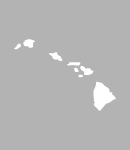
Hawaii 1:1 Access Grant Program
The Access Learning pilot project focuses on three main components: Providing educators with support and resources on instructional strategies that incorporate technology as a tool to engage students and promote collaboration and learning. Building capacity while providing support for schools to deploy and manage technology. Provide educators with core digital curricular materials for English language […]
-
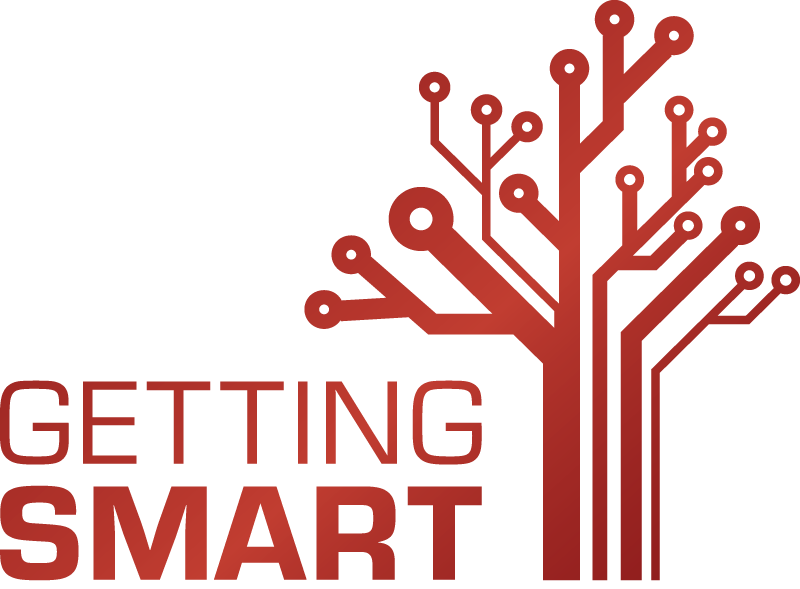
Smart Series Guide to Ed Tech Procurement
This paper provides a framework for Ed Tech purchasing and provides examples of best practices in education policy that support smart procurement.
-

Funding the Shift to Digital Learning
This paper provides strategies for investing in student success and sustaining high-access environments.
-
CIPA Compliance
The toolkit provides free tools to help meet the educational requirements outlined in the Children’s internet Protection Act and contains a selection of engaging, practical, and effective lessons from their K-12 Digital Literacy and Citizenship curriculum.
-

School Districts Using Mobile Hotspots to Help Students Connect at Home
This article provides an overview of multiple school districts across the country providing at home Wi-Fi access for students.
-

Idaho Wireless Requirements Policy
This policy requirements documents is for Idaho School Districts that are seeking to opt-out of the Idaho High School Wireless Managed Service and install their own wireless program. The policy includes specifications related to wireless coverage, bandwidth and access.
-

Analysis of Costs to Upgrade and Maintain Robust Local Area Networks for all K12 Public Schools
This study identifies the key equipment and services typically used to deploy and maintain a robust LAN, Wi-Fi and core WAN network and estimates the aggregate cost of the equipment.
-

Closing the Wi-Fi Gap in America’s Schools and Libraries
This blog post provides an overview of the need for increased Wi-Fi access in schools and shifts in the E-Rate Program.
-

5 Ways to Make the Most of the New E-Rate
This article provides an overview of the most recent changes to the E-rate program based on the FCC’s E-Rate Modernization initiative. h
-

FCC E-rate Maps of Fiber Connectivity to Schools and Libraries
This is an interactive map that shows, by School District, the percent of public schools with fiber connectivity sized by number of students. It does not show what percent of schools within a district actually subscribe to high-speed fiber.
-
Online Speed Test Tools
This document analyses three tools that are used to assess the current level of internet connectivity available within schools. It presents a detailed description of each tool, including its strengths and weaknesses followed by observations based on measured data, and finally, conclusions.
-
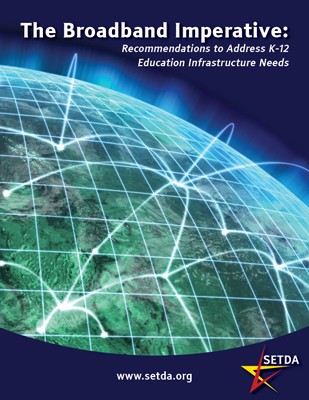
The Broadband Imperative: Recommendations to Address K-12 Education Infrastructure Needs
The Broadband Imperative provides an up-to-date assessment of access to broadband by students and teachers (in and out of schools); current trends driving the need for more broadband in teaching, learning and school operations; and specific recommendations for the broadband capacity needed to ensure all students have access to the tools and resources they need […]
-

Intel’s The Decision To Go Digital (sponsored resource)
This Intel-sponsored report provides the common steps in making the shift to digital content, including developing a plan, building the infrastructure, building a digital curriculum and considering devices.
-

Privacy Technical Assistance Center (PTAC)
This “one-stop” resource for education stakeholders provides information about data privacy, confidentiality and security practices related to student data.
-

Transforming Data to Information in Service of Learning
This report was developed to explain the major initiatives underway to address data standards and interoperability issues in K-12 education.
-

Creative Commons
The nonprofit organization Creative Commons (CC) addresses the legal issues of making content on the internet open so that people can use it as they wish for education, research and other purposes. The organization offers a spectrum of six intellectual property licenses that can be applied to content available on the internet by the person […]
-

Clarifying Ownership of Teacher-Created Digital Content Empowers Educators to Personalize Education, Address Individual Student Needs
This policy brief addresses the key issue of ownership of teacher-created digital content and offers recommendations for states and districts to effectively manage the increased use of digital content.
-
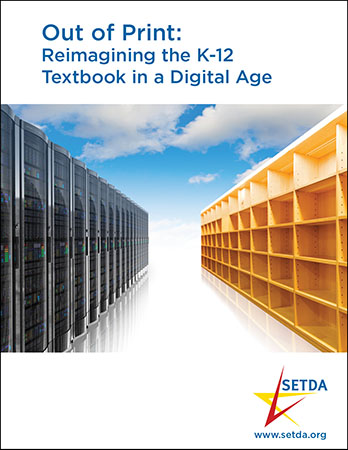
Out of Print: Reimagining the K-12 Textbook in a Digital Age
With a focus on the ultimate impact on student learning, this report provides examples of lessons learned from recent digital and OER content initiatives by leading states and districts and offers recommendations to ensure that the shift to digital instructional materials improves student achievement and engagement and efficiently uses scarce resources. Of special interest is […]
-
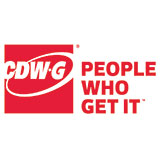
CDWG’s How to Transition from a Print to Digital Curriculum (sponsored resource)
This article profiles three districts that have tried distinct approaches to implementing digital curricula, including using a publisher’s digital materials, choosing open educational resources, and having students create their own curriculum.
-

Open Professionals Education Network (OPEN)
Open Professionals Education Network (OPEN) provides links to OER as well as guidance on how to handle licensing requirements for education-oriented digital materials
-
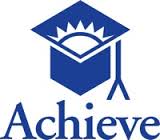
OER Rubrics
Developed by the non-profit organization Achieve, these rubrics were created to evaluate open educational resources, but they can be applicable to any content.
-
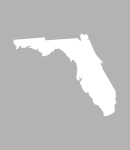
North East Florida Educational Consortium (NEFEC)
Comprised of 15 school districts, NEFEC focuses on helping member districts cooperatively meet their educational goals and objectives by providing programs and services that individual districts would not be able to provide as effectively or as economically when acting alone. NEFEC hosts an Instructional Technology program to provide network infrastructure guidance, computer systems technical support, […]
-

IlliniCloud
The IlliniCloud is a cooperative of Illinois school districts in Illinois providing cloud services specifically for K12 via three shared data centers in our state. This is a K12 for K12 developed cooperative but with partners from Higher Ed and contracted services for development of certain services. This cooperative helps to provide state of the […]
-

Kentucky Moves 173 School Districts to Cloud-Based ERP
This article explains how the Kentucky Department of Education moved 173 districts to cloud based services to help increase the reliability and capabilities for school districts and take workload off of IT staff.
-

The Tech Detectives: Students Take Ownership of Technology
This article includes a list of a responsibilities of faculty advisors for student tech support systems.
-

Kuna Middle School Student Tech Support
A team comprised of students who were trained, and also train other students, to help provide technology support, provides Kuna’s tier one tech support.
-

Tech Helps 3 – Insufficient Memory
This is a sample student-created helpdesk video used to provide “anytime, anywhere” support on a shoestring budget.
-

Factors to Consider in Implementing a Student Tech Support Team
This 6-page brief outlines the basic factors to consider when implementing a student tech support team.
-
The Service Desk: IT Infrastructure Library (ITIL)
Developed in the United Kingdom, the IT Infrastructure Library is a series of documents that are used to aid the implementation of a framework for IT Service Management. This online resource which is extracted from the ITIL Toolkit and providing an overview of the goals, activities and cost benefits of a help desk.
-

Building an Effective Technology Team
This resource includes a Self-Assessment Checklist for the K-12 Chief Technology Officer, which would be beneficial for districts to review and identify areas of strengths and growth.
-

California TechSETS
TechSETS provides training, tools and information to assist the growing number of school professionals who are responsible for planning, building, maintaining and using technology systems in education.
-
Top Ten Metrics to Monitor Health of your Help Desk
Zendesk provides a helpful list of service desk metrics.
-

Smart IT Strategic Technology Planning and Management
This report provides a examples of how to make the most of limited technology dollars now and in the future.
-
Project Red Research Findings
This webpage provides the research findings from Project RED’s 2010 large-scale national study to identify and prioritize the factors that make some U.S. K-12 technology implementations perform dramatically better than others.
-

North Carolina Learning Technology Initiative (NCLTI) Framework for Planning
The NCLTI Masterplan and mapping documents provided by the Friday Institute can assist technology planning teams in building broad-based support for defining and disseminating the vision, goals, rationale and principles for the initiative.
-
The Center for Digital Education
This is a national research and advisory institute that reports on the current trends and policy efforts that guide educational technology in the US. By describing how school districts, schools, and individual teachers can work together to modernize the learning environment, these reports can be helpful for identifying key strategies to be included during planning […]
-

School Technology Needs Assessment
STNA is intended to help school-level decision makers administrators, technology facilitators, media coordinators, or technology committee members – collect data to plan and improve uses of technology in teaching and learning activities.
-

Digital Learning Rubric
The Digital Learning Rubric provides a means for district or school leadership teams to engage in a process of self-reflection and discussion in order to establish a shared vision for digital learning initiatives. Its intended purpose is to assist in assessing needs and setting goals for the use of technology in the classroom to support […]
-

Project 24
Project 24 is a comprehensive district-level technology planning tool that has embedded advice, implementation ideas and tangible suggestions to support district-wide technology planning.
-

Open Badges Infrastructure (OBI)
The Open Badges Infrastructure is a standard and a platform for issuing, storing, and sharing “micro-credentials,” recognition for skills and achievements that learners have completed.
-

Micro-Credentials: Empowering Lifelong Learners
This article highlights the potential for digital badges and teacher professional learning.
-

Digital Promise Micro-Credential Initiative
This initiative provides a competency-based approach to assessing teaching practices, uses expert and peer reviews to ensure a rigorous standard and creates a clearinghouse where teachers can share best practices.
-

A Guide to Understanding Student E-Portfolios: K-12 Digital Portfolio Programs for College and Career Readiness
K-12 schools around the globe are piloting e-portfolio programs that allow students to showcase work, apply real-world skills, and track learning outcomes as they prepare for college and a career. This guide focuses on student-owned e-portfolios in the K-12 setting however, the same principles can be applied to teacher portfolios. Its purpose is to provide […]
-
Top State-by-State Twitter Chats
This article provides an overview of statewide Twitter chats related to education technology.
-
Professional Learning Networks Designed for Teacher Learning
This paper reviews three popular PLNs created for educators—Edmodo, Classroom 2.0, and The Educator’s PLN—and provides an analysis of how teachers use the PLNs for learning, sharing, and communicating.
-
Teachers Guide on Creating Personalized Learning Networks
This web page provides a general overview of PLNs and multiple resources for educators related to PLNs.
-

Professional Learning in the Learning Profession: A status report on teacher development in the United States and abroad
This report provides an overview of professional learning and includes examples of formal and informal professional learning opportunities with some research regarding the effectiveness of self-directed learning opportunities.
-

Intel’s Teacher Engage Community (sponsored resource)
This online community provides ongoing support for teachers as they implement new teaching practices by connecting educators who implement technology into their classrooms and promoting student-centered approaches. It offers 21st century classroom resources, online courses, and active dialogue within a global network.
-

LearnPort
LearnPort serves all members of Michigan’s educational community, including faculty, administrators and staff in schools, affiliated professional organizations, and college and university education students and their teacher education faculty, as well as guests and collaborating users by providing high-quality online professional development, collaboration spaces and other resources for the education community.
-

Indiana’s Online Communities of Practice
Organized around teachers’ content areas, these groups were created to boost collaboration and peer-to-peer sharing of online resources aligned to Indiana’s Academic Standards.
-
Statewide Use of Professional Learning Communities
This report examines how states are using school-wide, large-scale professional learning communities in their school improvement work.
-

EdTech Leaders Online: A case study of scalable online professional development programs
Clayton Christensen Institute. This case study looks at the impact of West Virginia’s e-Learning for Educators program implementation and sustainability model.
-

Online Communities of Practice: What Works
Four leaders of successful community of practice (COP) education initiatives participated in a panel at FETC and shared their knowledge about and experience with best practices for online communities of education practitioners. This article is an excerpt of the discussion.
-

U.S. Department of Education’s Connect and Inspire: Online Communities of Practice in Education
This report is targeted to education leaders and stakeholders who are interested in exploring, starting, or strengthening online communities of practice for educators.
-

Differentiated Literacy Coaching
Chapter 1 provides an overview of the rationale for technology coaching, principles for coaching and ideas for planning and evaluating a coaching model.
-

Effective Coaching by Design
This article provides an overview of the value of coaching and the essential steps for successful coaching.
-

Texas Teacher School Technology and Readiness “STaR” Chart
This is a tool that aligns the progress that individuals (e.g. teacher, campus) make toward meeting state and district technology goals with the four key areas of the state’s Long-Range Plan for Technology, 2006 – 2020.
-

ASCD’s Five Levels of Professional Development Evaluation
This resource frames five outcomes of professional development that are typically of interest: participants’ (i.e. teachers’) reactions, participants’ learning, organization support and change, participants’ use of new knowledge and skills, and student learning outcomes.
-
Substitution Augmentation Modification Redefinition Model (SAMR) and Curriculum Redesign
SAMR offers a method of seeing how technology might impact teaching and learning through four key levels: Substitution, Augmentation, Modification and Redefinition.
-
Technological Pedagogical Content Knowledge Framework (TPACK)
TPACK is a framework that extends Lee Shulman’s idea of Pedagogical Content Knowledge by identifying the knowledge teachers need to teach effectively with technology.
-

Technology Integration Matrix
The Technology Integration Matrix (TIM) illustrates how teachers can use technology to enhance learning for K-12 students. The TIM system includes a variety of different data collection tools designed to inform decision-making and alignment of resources at the classroom, school, and district levels. Arizona has also adopted the TIM as a tool for their districts.
-

CCSSO’s Interstate Teacher Assessment and Support Consortium Learning Progressions (InTASC)
The efforts of InTASC have helped to describe the new vision of teaching needed for today’s learners and what strategies teachers can employ to improve their practice both individually and collectively. inTASC specifically addresses the need for teachers to be able to personalize instruction through digital learning and how teachers should develop expertise in applying […]
-

National Education Technology Plan 2010 (NETP)
Teaching: Prepare and Connect Chapter (39-50). This section of the NETP provides an overview of the need to provide on-going professional learning opportunities to both instructional and non-instructional staff members.
-

Wisconsin’s Writing a Professional Development Plan (PDP)
This document provides tips, components and resources for writing professional development planning at their website. WDPI also links to promising programs that illustrate professional development plans for districts seeking examples.
-

Maryland Teacher Professional Development Planning Guide
The guide describes the elements of an effective plan for teacher professional development and presents a six-step planning process.
-

Learning Forward’s Professional Learning Plans Workbook
This resource provides an overview of comprehensive professional learning systems and provides a 7-step guide to developing professional learning plans.
-

Culture Shift: Teaching in a Learner-Centered Environment Powered by Digital Learning
This report examines the characteristics of learner-centered instruction and the support that educators and schools will require to make such an approach work.
-
Professional Learning in a Digital Age
This resource shows the changes in the professional learning field as related to what, how and when teachers learn, including important considerations of emerging models such as personalized learning networks, online learning opportunities and coaching.
-
Standards for Professional Learning Resources
Professional learning that increases educator effectiveness for all students requires prioritizing, monitoring, and coordinating resources for educator learning. The Learning Forward Standards are general standards for professional learning across K12 that highlight the importance of sustainable, ongoing, job-embedded professional learning opportunities.
-
Schools and Software: What’s now and what’s next
This study analyzes results of a survey of 30 small to medium-sized school districts, many of which are technology leaders, to determine trends in technology demand and usage, especially as it relates to software of all kinds.
-

Project 24 Framework
This online tool includes a section Community Partnerships with recommendations regarding parental communication and engagement.
-

Launching an iPad 1-to-1 Program: A Primer
This article includes an overview of multiple considerations for one-to-one programs including the need for clear communication for all stakeholders.
-
The Accessibility of Learning Content for All Students, Including Students with Disabilities, Must Be Addressed in the Shift to Digital Instructional Materials
The document focuses on the need to address the needs of students with disabilities as related to digital instructional materials.
-
Supporting English Language Learners Through Technology
This document provides and overview of the value of technology tools for language acquisition and examples of ELL instruction with technology tool.
-

Massachusetts State Guide for Access to Learning
This document guides Massachusetts’ school districts in providing technology supports to students with disabilities.
-
Purchase Accessible Learning Materials (PALM) Initiative
This initiative provides resources for encouraging purchasers to buy, and publishers and developers to create, accessible learning materials.
-
Paving a Path Forward for Digital Learning in the United States
The (LEAD) Commission recommends a five-point plan that calls on federal, state, local, private and non-profit sectors to arm schools and students for the 21st century.
-
Learner at the Center of a Networked World
This paper is a cross-sector, cross-partisan report of the Aspen Institute Task Force on Learning and the Internet that highlights twenty-six actions for optimizing learning and innovation within a trusted environment.
-
The Hard(ware) Choice: Selecting a 1-to-1 Computing Device
This video is a virtual roundtable discussion with seven district leaders sharing how they decided on the device that would best fit their districts teaching and learning needs.
-

The Guide to Technology Requirements
This website is a one-stop resource to help school districts identify technology requirements for online assessments as well as provide considerations for instruction, learning, and school operations.
-

Choosing Computing Devices for Common Assessments
This article briefly summarizes device considerations as related to online assessments and classroom instruction.
-
Districts Forge School-to-Home Digital Connections
This article provides examples of school districts providing home access to school distributed devices.
-
Creating Anytime, Anywhere Learning for all Students: Key Elements of a Comprehensive Digital Infrastructure
This resource includes recommendations regarding student device access at home.
-
Bring Your Own Device: A Guide for Schools from Alberta Education, School Technology Branch
This research paper provides an overview of considerations and implementation models related to BYOD programs.
-
The 6 hidden tricks for Bring-Your-Own-Device successes
A case study of Forsyth County Schools (GA) illustrates six key successes to BYOD implementation.
-
Key Challenges in BYOD
This resource provides an overview of considerations related to BYOD including sections on governance & compliance, mobile device management and security.
-

Intel’s (At Least) 101 Tips for Going 1:1 or BYO from K12 Blueprint (sponsored resource)
The Intel blogs, articles and other resources outlined via this online resource answer crucial questions related to BYO from many different perspectives.
-

Maine Learning Technology Initiative (MLTI) IV 2014 Deployment
Maine provides a detailed resource that outlines the steps and issues related to technology deployment for their 2014 deployment of the Maine Technology Learning Initiative:
-

Intel’s Planning for Success: The Keys to Effective Technology Initiatives, K-12 Blueprint
This resource provides materials and toolkits for implementing technology, including toolkits for 1 to 1 and BYOD. It also has a section on devices.
-
Digital School Districts Survey Identifies Innovative Uses of Technology
The 2014 Digital School Districts Survey by the Center for Digital Education (CDE) and the National School Boards Association (NSBA) recognized school districts for their expanding use of innovative technologies district-wide as well as in the classroom. The survey showcases exemplary school boards’ and districts’ use of technology to govern the district, communicate with students, […]
-
Technology, Coaching, and Community
This report provides an overview of the value of implementing technology coaches, examples of how and why technology coaches are working and sample case studies.
-

Common Sense Media E-rate Toolkit
The toolkit provides free tools to help meet the educational requirements outlined in the Children’s internet Protection Act and contains a selection of engaging, practical, and effective lessons from their K-12 Digital Literacy and Citizenship curriculum.
-

Rethinking Acceptable Use Policies to Enable Digital Learning: A Guide for School Districts
This paper provides an overview of how and why schools develop and maintain current acceptable use policies.
-
1-to-1 Essentials – Acceptable Use Policies
This website provides an overview of acceptable use policies, shares guidelines on how to write an effective policy and varied examples of policies.










